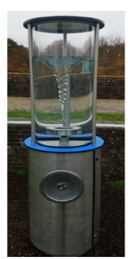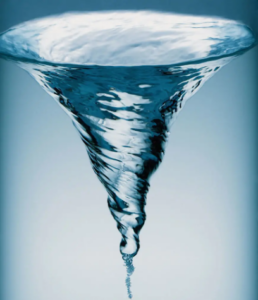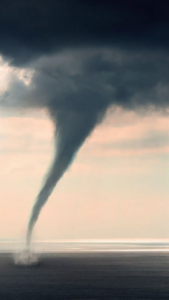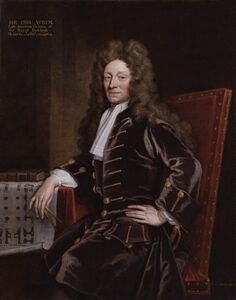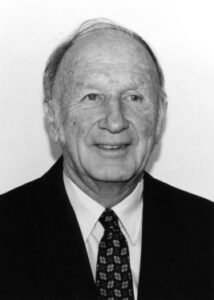Water Vortex
Tasks
|
||||||
MathsWhirlpools are vortexes of rotating water and occur naturally in narrow ocean straits. This is the same sort of vortex you see when draining a bath. Water near the centre of the whirlpool is travelling faster than water further away. This means that water near the centre needs more horizontal force to keep it moving in a circle. When the surface of the water is steeper there is more horizontal force so, if you half the distance to the centre of whirlpool, the water is moving at twice the speed and the surface of the water needs to be eight times steeper. This creates a funnel-like shape, called a hyperboloid. Similarly, tornados are rotating columns of air containing winds over 40mph. Tornados have the same funnel-like shape as whirlpools and are created by atmospheric turbulence. Predicting tornado storms in advance will save lives. Equations incorporating air temperature, dew-point temperature, wind speed and pressure can be used to predict a tornado day. Predictions cannot be made far in advance because small changes can give very different long-term results. This is an example of chaotic behaviour. |
||||||
HistoryTornados appear suddenly, and usually last only a few minutes, so it is impossible to predict the appearance of individual tornados. But we can predict the conditions that produce tornados. Before the 1950s, the only way to detect a tornado was by someone seeing it. However, with radar, weather stations began to monitor the thunderstorms that were likely to produce tornadoes and look for certain features that lead to their formation. Unfortunately, radar systems do not detect the tornadoes themselves, just storms with the potential to make tornadoes. Since the 1970s, the UK use a network of storm spotters to verify whether there is a real tornado threat. |
||||||
People
|
||||||
ApplicationsThe UK has around 30 to 50 tornadoes per year – the highest incidence of tornadoes per unit area of land in the world. The tornadoes in the UK are usually quite small and only cause minor damage, but occasionally they can be destructive. Predicting tornado storms in advance will save lives. Equations incorporating air temperature, dew-point temperature, wind speed and pressure can be used to predict a tornado day. Predictions cannot be made far in advance because small changes can give very different long-term results. |
||||||
Maths at HomeMake your own tornado in jar by filling a jar with water and moving the jar in circles to create a whirlpool effect. Add glitter or dye for a greater visual effect. Or create a tornado tube, which creates a whirlpool as the water drains from one bottle to another. |

